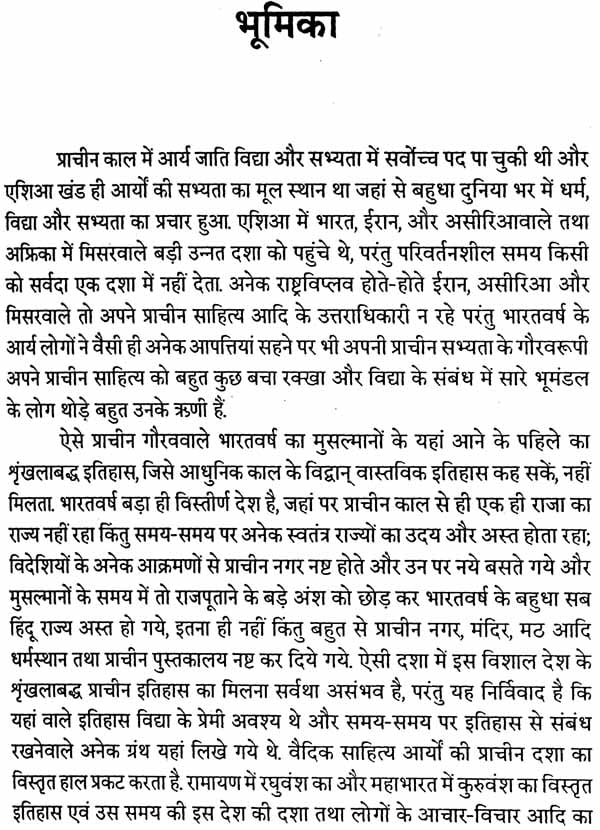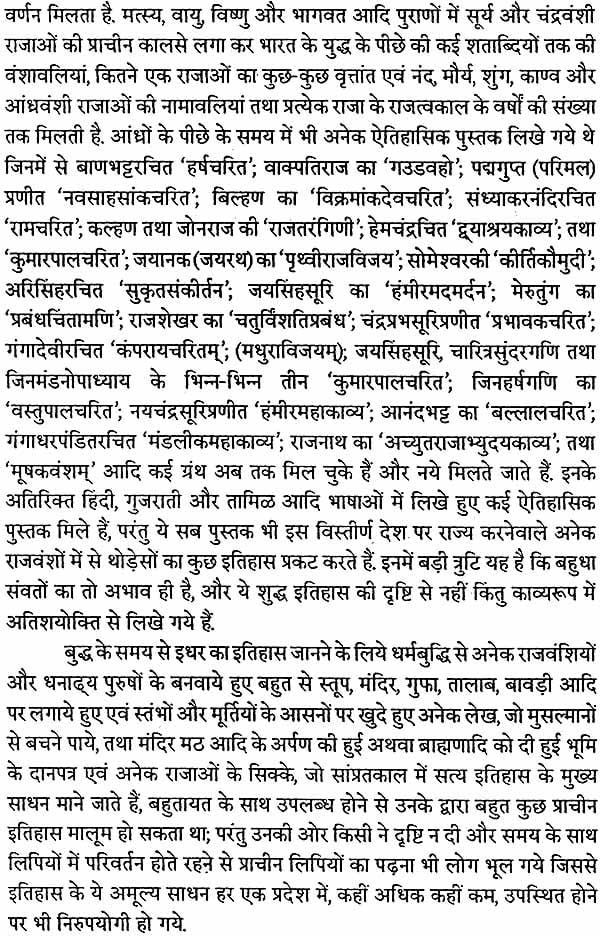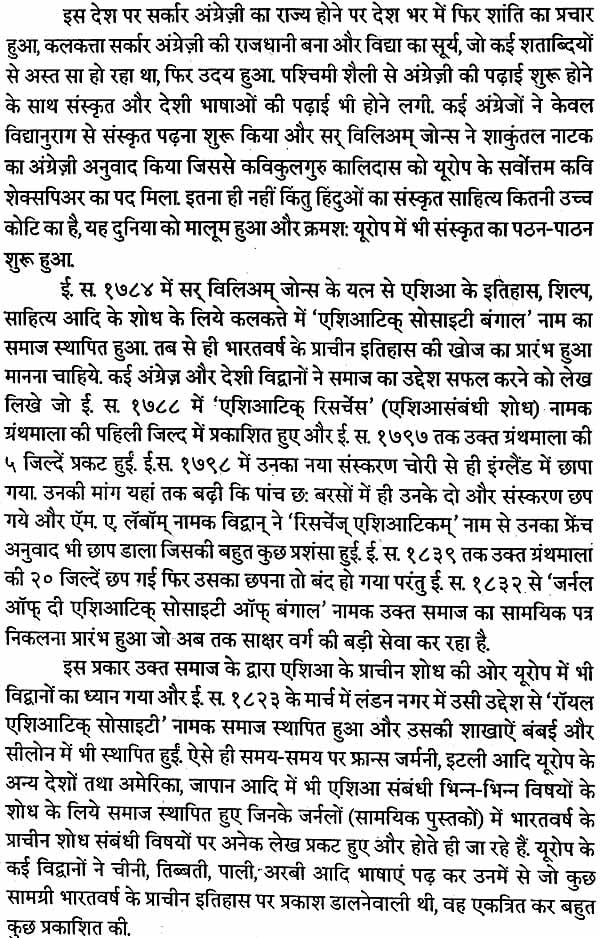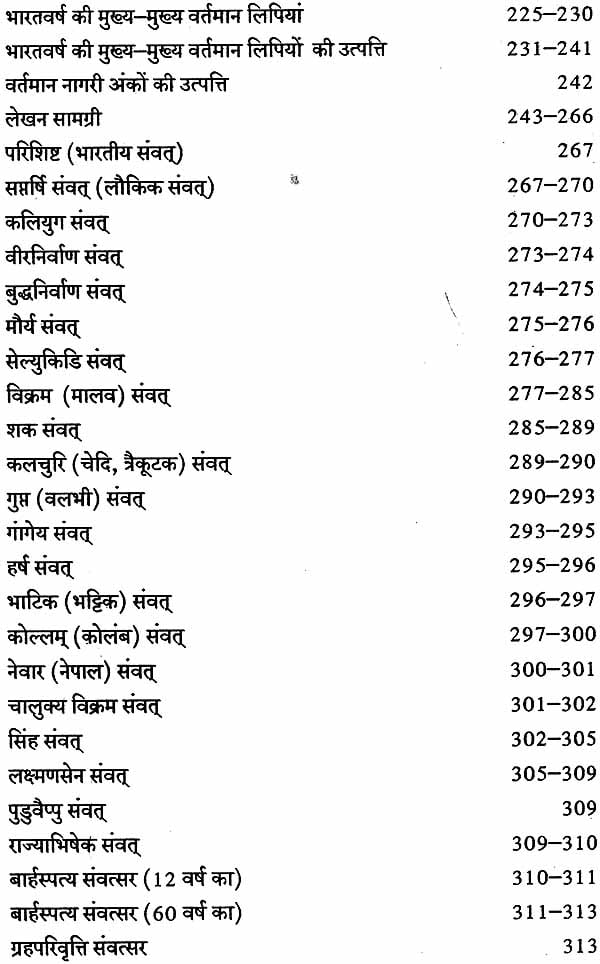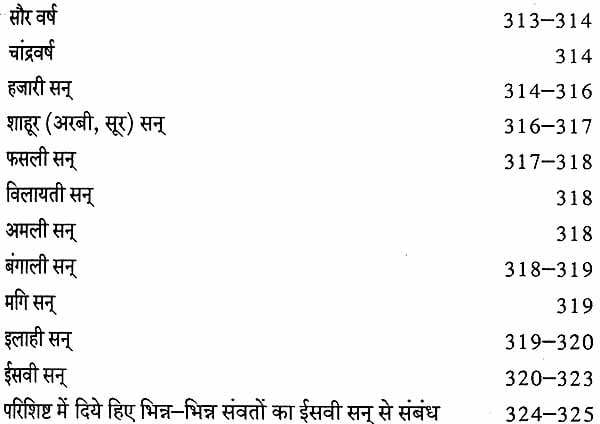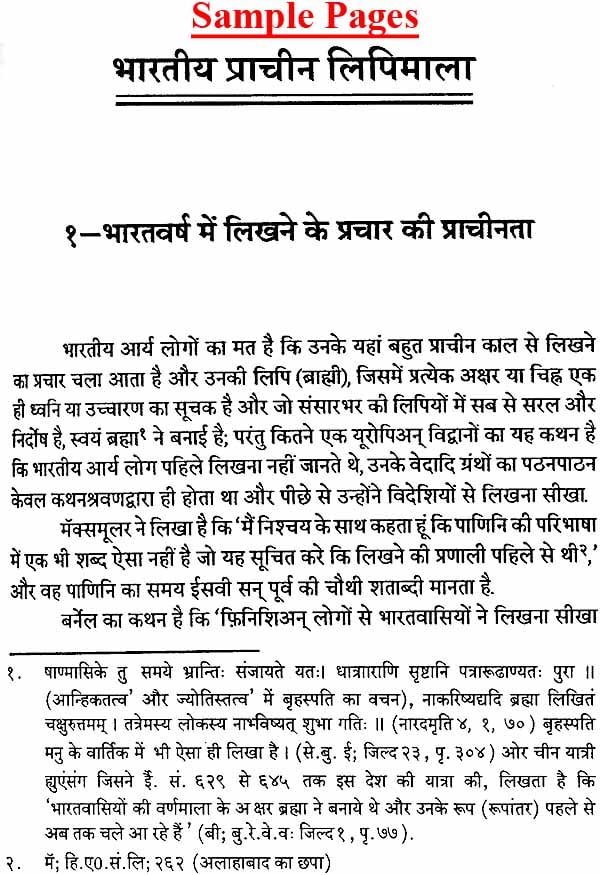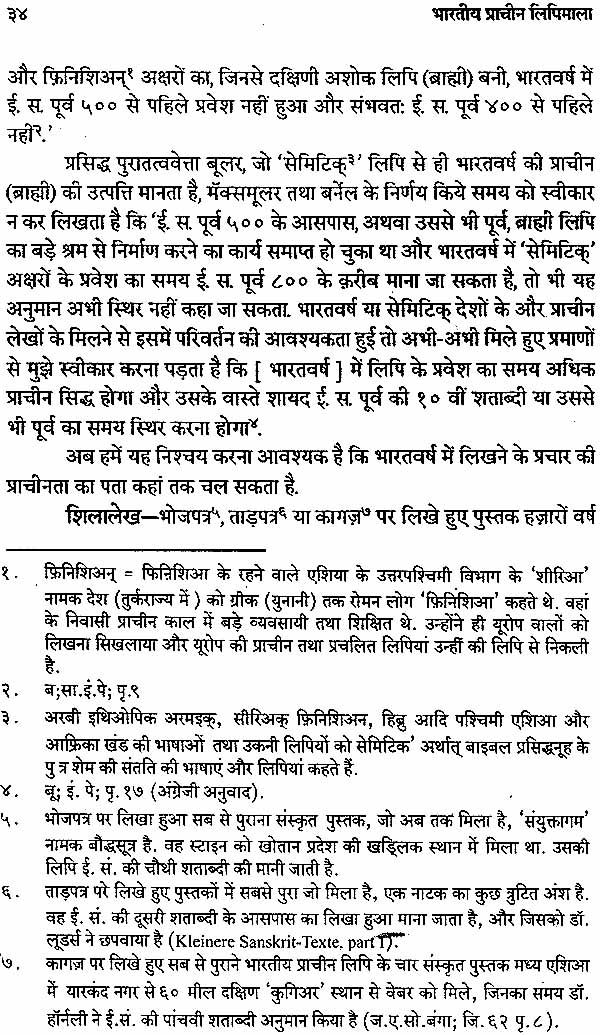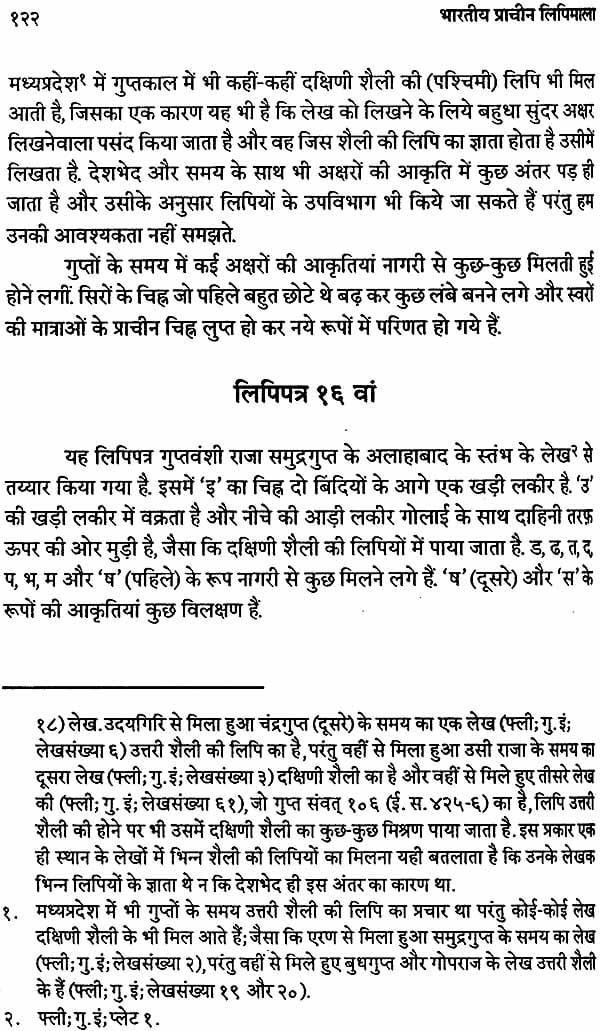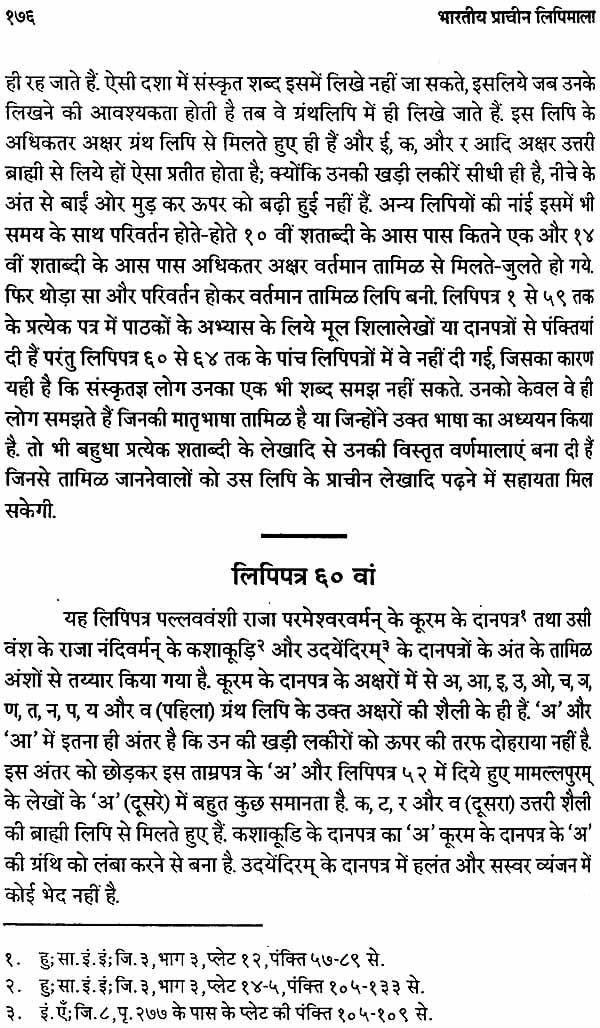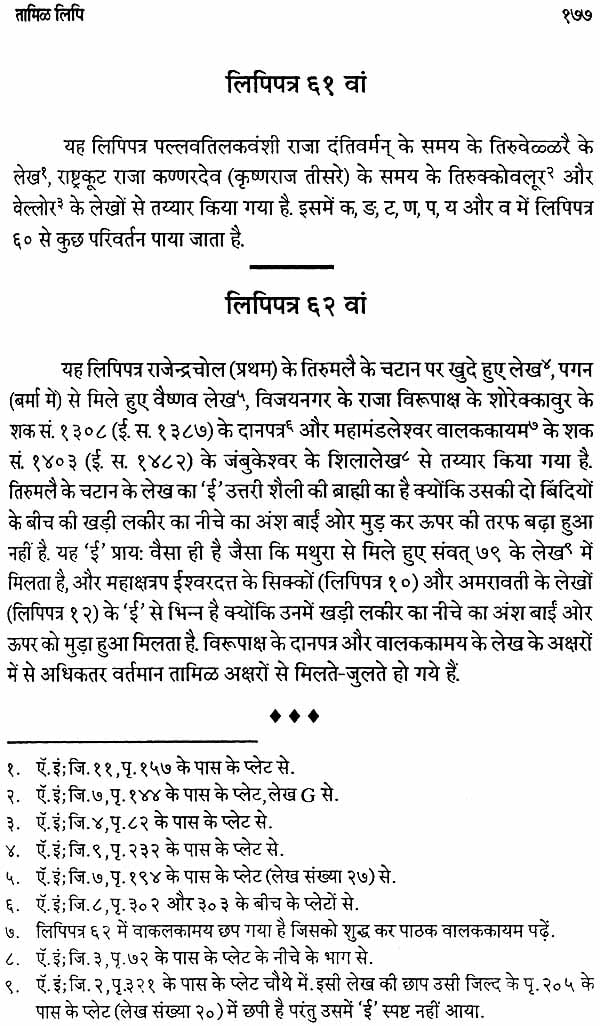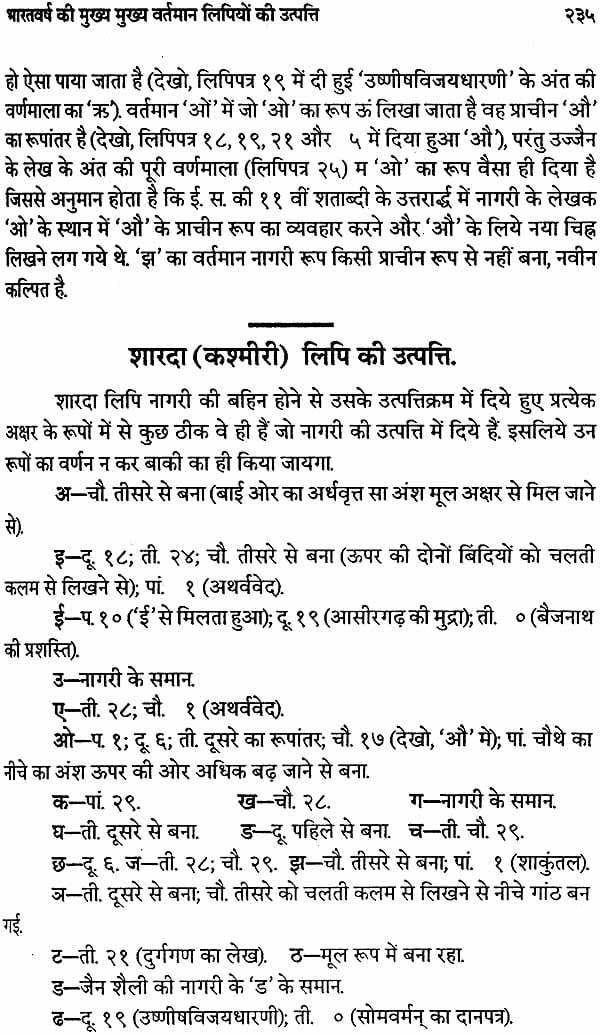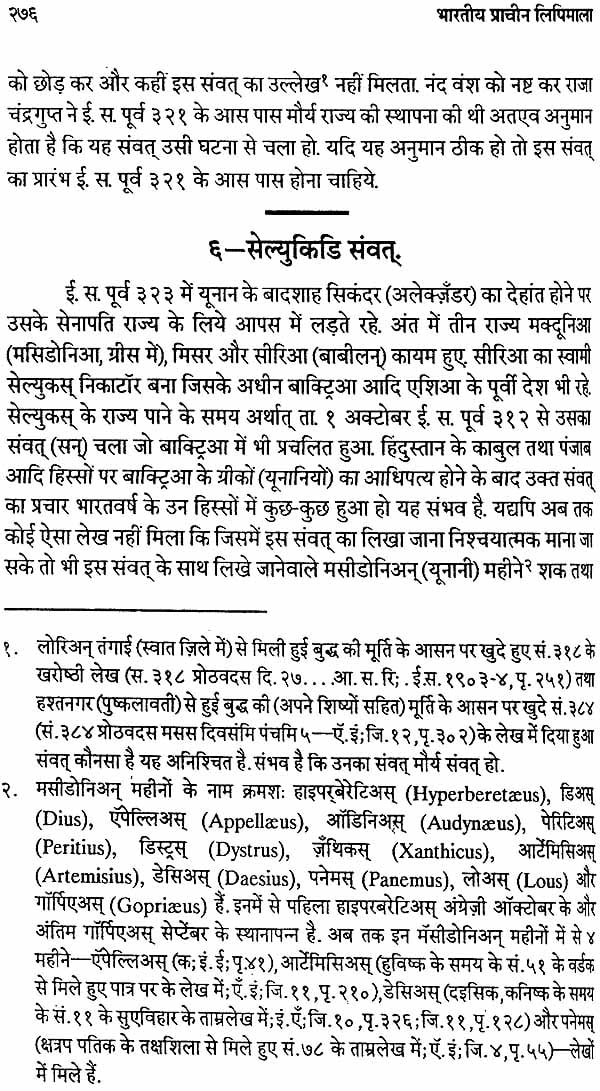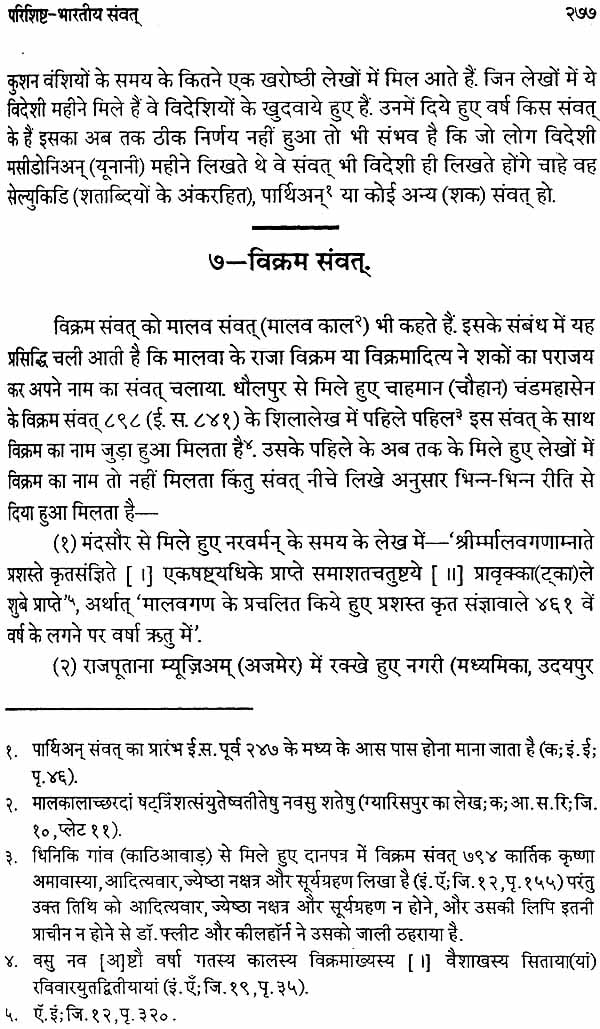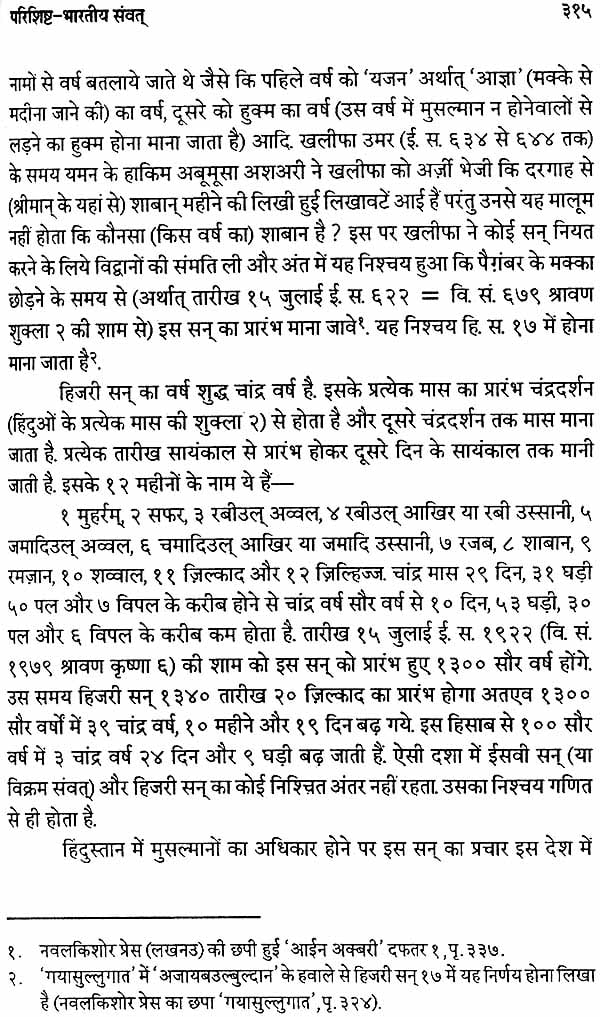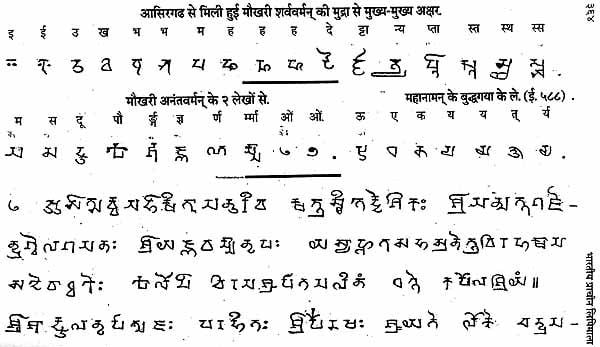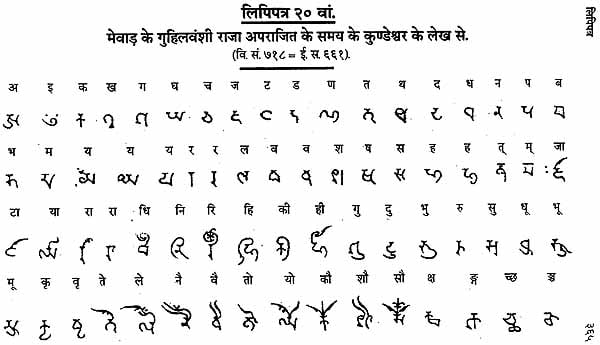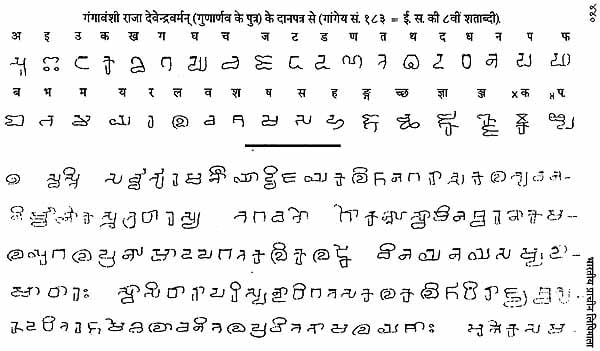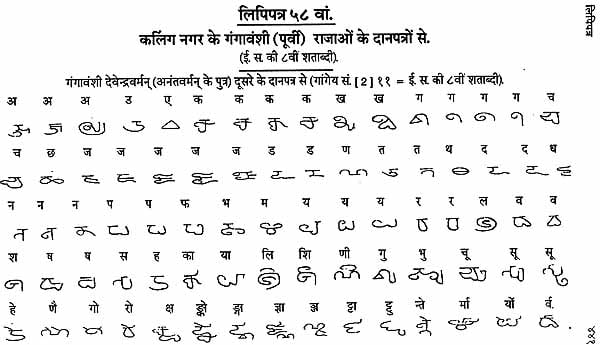
भारतीय प्राचीन लिपिमाला: The Palaeography of India
Book Specification
| Item Code: | NZL010 |
| Author: | पं. गौरीशंकर हीराचन्द ओझा (Rai Bahadur Pandit Gaurishankar Hirachand Ojha) |
| Publisher: | Rajasthani Granthagar, Jodhpur |
| Language: | Hindi |
| Edition: | 2016 |
| ISBN: | 9789385593710 |
| Pages: | 538 |
| Cover: | Hardcover |
| Other Details | 8.5 inch x 5.5 inch |
| Weight | 750 gm |
Book Description
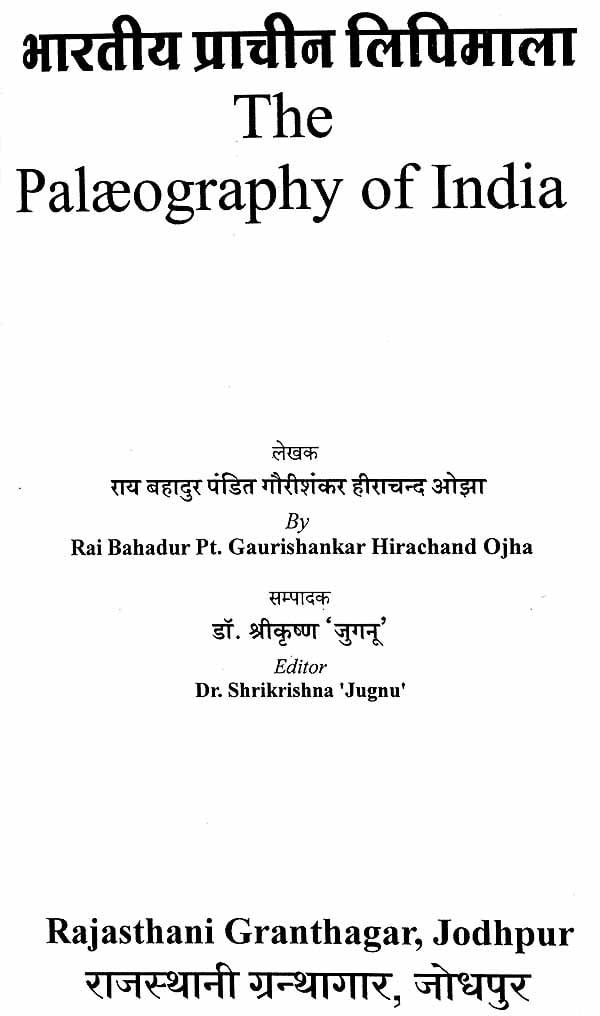
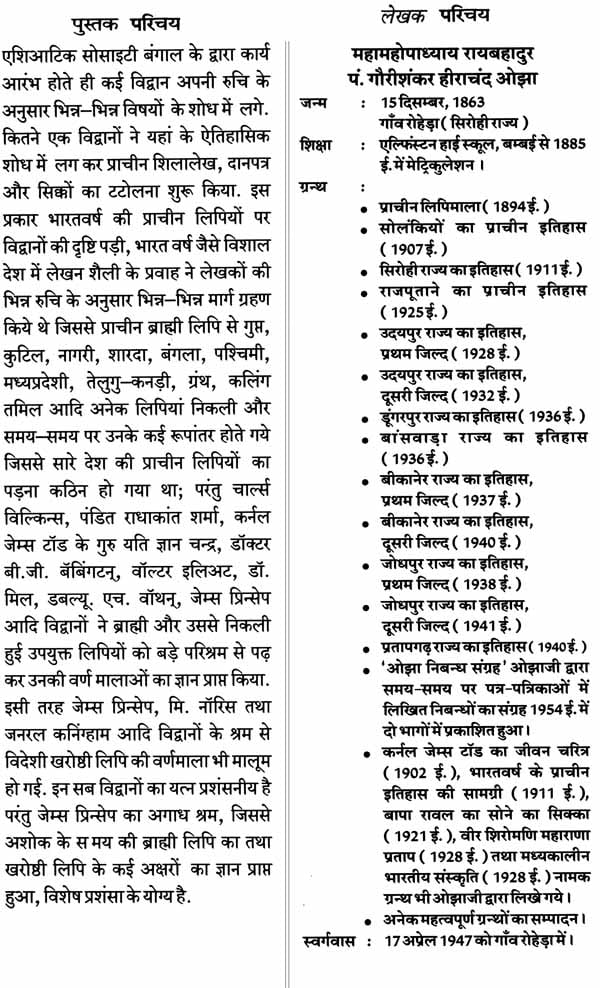
UP TO the dawn of the nineteenth century the early history was practically a sealed book to the world. Little material for a true history of the country was available even to scholars who could understand and appreciate the different stage through which the people of this great and ancient country had passed during the last three or four thousands years. The political changes and social disintegration, which marked the eight or ten centuries preceding the arrival of the British in India, left little opportunity or inclination in people to study the history or the literature of their country. With the advent of the English and the gradual opening up sof the different parts of the country, an interest in its history and literature was awakened, and scholars took to a study of Sanskrit literature and philosophy. This gave rise to a study of Indian archaeology which has, since the beginning of the last century, brought to light much important material for a proper and systematic reconstruction of the history of India. A knowledge of Indian Palaeography, however, is essential for a study of Indian archaeology. Ignorance of ancient Indian scripts and the consequent inability to read inscriptions on stone, copper plates and coins contributed not a little to the confused and incorrect ideas on Indian history, which prevailed in the country for a long time. Whatever light modern researches have cast on the dark pages of the early history of this country is due, to a large extent, to the labours of the pioneers among European scholars who succeeded in tracing out the various forms through which the Indian alphabets have passed. The complete reading of the- Brahmi and Kharoshthi characters by Princep and other marks the beginning of much valuable work done by European and Indian scholars, without which our present knowledge of the early history of India would have been impossible.
To a student of the early history of India a through acquaintance with the various alphabets in use in ancient India and their correlation is necessary. The great obstacle, however, to the cultivation of the study of Indian Palaeography was the absence of a single book dealing with the subject as a whole-a book by means of which the subject could be studied without the help of a teacher. The materials for such study are to be found in English and other European languages. Numerous facsimiles, transcripts, translations, dissertations, comments and criticism have. from time to time, appeared in various Government publications and the journals of learned societies. The volume and expense of these publications, however. place them out of the reach of the ordinary student, who has no means of referring to them unless he happens to reside in a large town which has a good library.
To meet this want, I published, as early as 1894 A.D., 'Prachina Lipimala' or 'The Palaeography of India' in Hindi. It was the first book of its kind in any language, and was much appreciated by European and Indian scholars. It gave an impetus to the study of the subject, and many Indian and European scholars found the book useful for a study of Indian Palaeography. The Indian Universities, too, included Palaeography as an optional subject for the M.A degree, and the book was used by students going up for that examination. The demand was so great that the first edition was sold out in a few years. and copies were not available even when twenty times the original price was offered for them.
The book. therefore, appears to have supplied a widely-felt want, and I have, from time to time, received letters urging me to bring out a second edition of the book. In doing so, I have throughly revised and rewritten the whole of the subject matter.
Archaeology has made great progress in India during the last 25 years. owing to the important research work of various scholars and to the impetus.is given to the study of the subject by the reorganisation of the Archaeological Department by Lord Curzon. A mere reprint of the first edition would. therefore. have rendered the book very incomplete as a work of reference. I have. therefore, incorporated in it the results of recent researches on the subject. The present edition has. in consequence. increased to thrice the bulk of the original book.
The book naturally divides itself into two parts. the first Descriptive and the second Illustrative. The first part contains the following chapters:-
- . The antiquity of the art of writing in Ancient India.
- The origin of the Brahmi alphabet.
- The origin of the Kharoshthi alphabet.
- . The history of the decipherment of ancient characters.
- . The Brahmi script (Plates 1-15).
- . The Gupta script (Plates 16-17).
- . The Kutila script (kPlates 18-23).
- The Nagari script (Plates 24-27).
- . The Sarada script (Plates 28-31).
- . The Bengali script (Plates 32-35).
- . The Western script (Plates 36-40).
- . The script of the Central Provinces (Plates 41-42).
- . The Telugu-Canarese script (Plates 43-51).
- . The Granstha script (Plates 52-56).
- . The Kalinga script (Plates 57-59).
- The Tami! script (Plates 60-62).
- . The Vatteluttu script (Plates 63-64).
- The Kharoshthi script (Plates 65-70).
- Numerical symbols and figures of the Brahmi and other scripts derived from it (Plates 71-76).
- . Numerical symbols of the Kharoshthi script (Plate 76. last chart).
- The principal Indian scripts of the present day (Plates 77-81).
- . Evolution of the principal Indian scripts of the present day (Plates 82-84).
- . Evolustion of the present Nagari numerals (Plate 84. last chart).
- . Writing materials.
I have. where necessary. given the opinions of various writers and my reasons for agreeing with or dissenting from their views.
An appendix follows containing a dissertation on the epochs of various eras used in India, viz:-
Saptarshi, Kaliyuga, Vira-Nirvana, Buddha-Nirvana, Maurya, Selucidi, Vikrama, Saka, Kalachuri, Gupta, Gangeya, Harsha, Bhatika, Kollam, Nevara, Chalukya-Vikrama, Simha, Lakshmanasena, Puduveppu, Rajyabhisheka, Barhaspatya, Grahaparvritti, solar and lunar years, Hijri, Sahura, Fasli, Vilayati, Amli, 8engali, Magi and Christian eras.
The second part comprises 84 plates. The relation of the various plates to different chapters of the text has been detailed above.
In the plates 1-70 dealing with the various scripts, covering the period from the 3rd century B.C. to the 16th century A.D., the following method has been adopted :-
Vowels, consonants, consonants with vowel particles, conjunct consonants and special symbols or formations are selected from important inscriptions, copper-plates, coins and manuscripts of the period in question and arranged in proper order under the corresponding Nagari characters. Then follow a few lines from the same sources in original for exercise in deciphering. The characteristics of each script and special formations are traced and explained in the chapter relating to the plate, which also contains a Nagari transcript of the lines given for exercise.
Extracts in original are not given for exercise in plates 60-64, as all inscriptions found in these characters are in Tamil language. and not Sanskrit.
I trust that those interested in the subject will find in this book all that is required for the beginner, and that my book will arouse interest among my countrymen and induce them to follow this fascinating study, which has helped, and will continue to help, the restoration of an authentic history of India. Should it prove so, my labours will have been more than amply rewarded.
